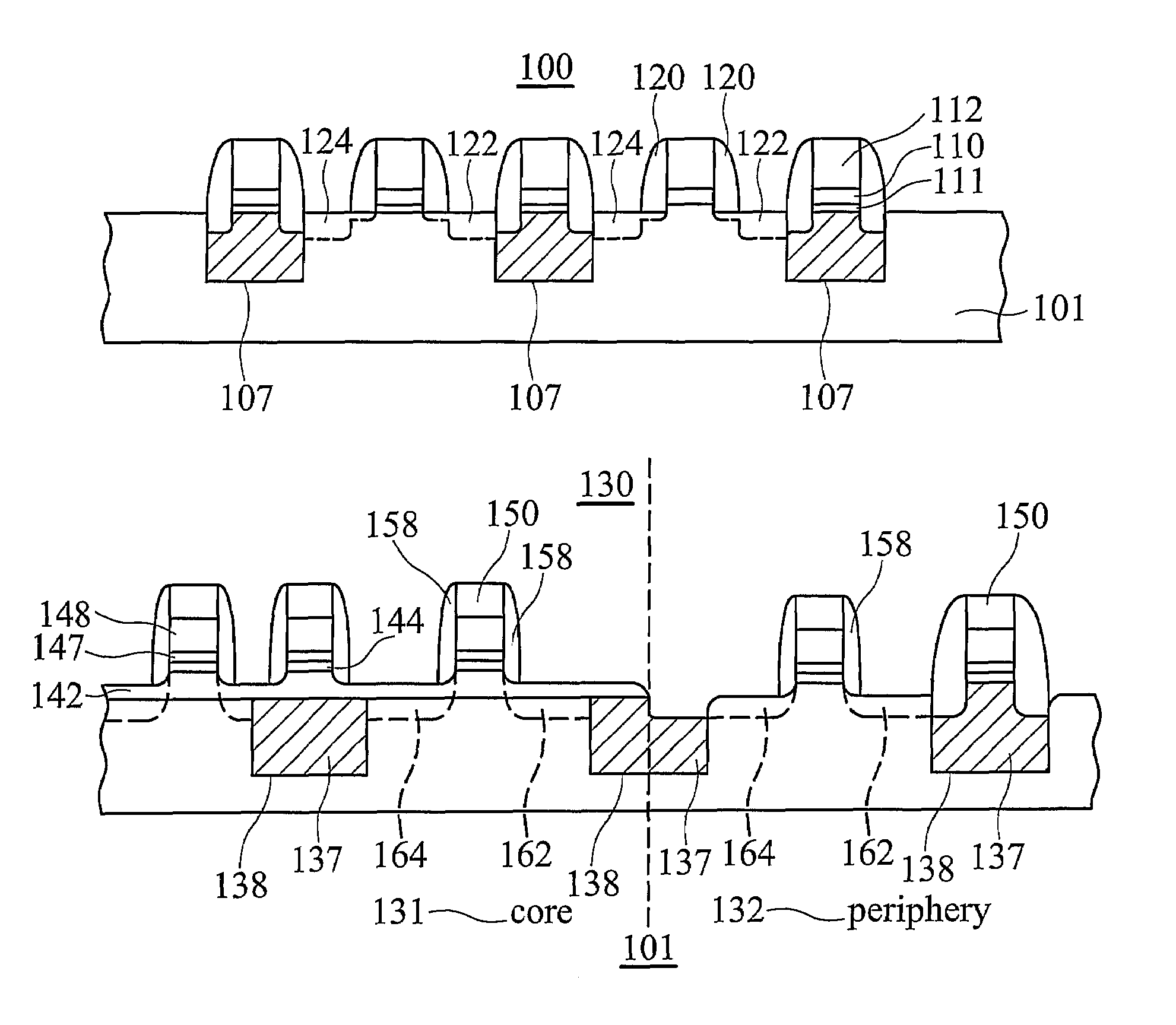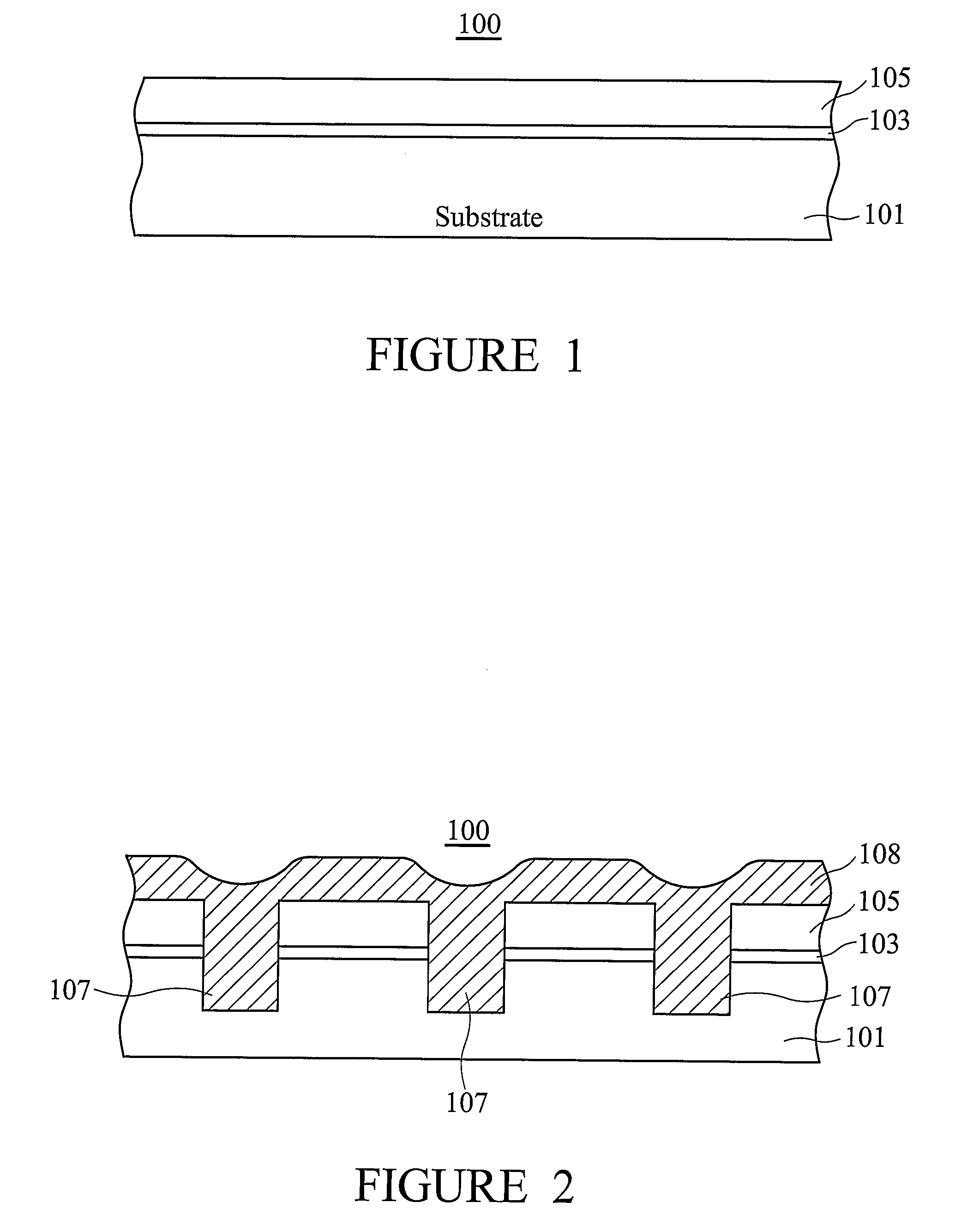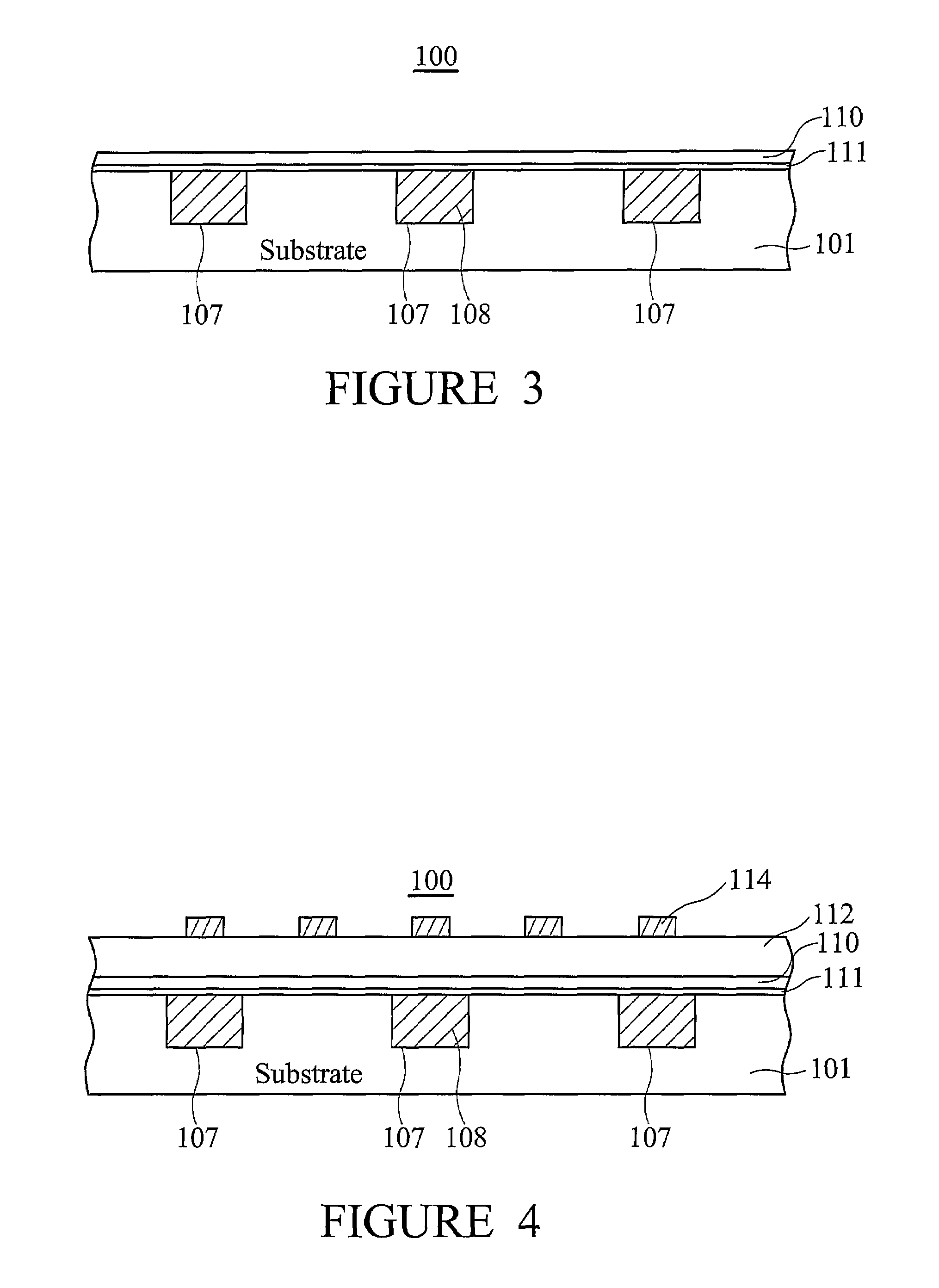Method and apparatus for a semiconductor device with a high-k gate dielectric
a technology of high-k dielectric and semiconductor devices, applied in the direction of electrical apparatus, semiconductor devices, basic electric elements, etc., can solve the problems of gate dielectric leakage, short channel effect (sce), and less desirable commercial devices using high-k dielectric materials
- Summary
- Abstract
- Description
- Claims
- Application Information
AI Technical Summary
Benefits of technology
Problems solved by technology
Method used
Image
Examples
Embodiment Construction
[0038]The operation and fabrication of the presently preferred embodiments are discussed in detail below. However, the embodiments and examples described herein are not the only applications or uses contemplated for the invention. The specific embodiments discussed are merely illustrative of specific ways to make and use the invention, and do not limit the scope of the invention or the appended claims.
[0039]FIG. 1 depicts a cross sectional view of an integrated circuit 100 not drawn to scale, but drawn as an illustration only. Semiconductor substrate 101 will provide the basic material for the manufacture of the circuit. Substrate 101 is shown with a pad oxide layer 103 and a nitride layer 105 deposited over it using typical deposition processes, for example the depositions may be a chemical vapor deposition, a plasma enhanced deposition, or any other blanket deposition known in the art, such as reduced pressure CVD or others. The nitride layer 105 can be formed by LPCVD with a resu...
PUM
 Login to view more
Login to view more Abstract
Description
Claims
Application Information
 Login to view more
Login to view more - R&D Engineer
- R&D Manager
- IP Professional
- Industry Leading Data Capabilities
- Powerful AI technology
- Patent DNA Extraction
Browse by: Latest US Patents, China's latest patents, Technical Efficacy Thesaurus, Application Domain, Technology Topic.
© 2024 PatSnap. All rights reserved.Legal|Privacy policy|Modern Slavery Act Transparency Statement|Sitemap



